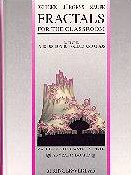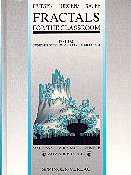This wonderful pair of books form the perfect intermediate between the mathematics-free glossy coffee table and popular books about chaos, and the learnèd, post-graduate level tomes and research papers. Together, these well-written, well-illustrated books are packed with information and examples, and cover most of the fundamentals of fractals and chaos theory, even managing to cram in chapters slightly off the beaten track, such as the one on 'growing' fractals using L-systems.
![[fern]](../_misc/fern.jpg)
Not light reading, but very rewarding after a bit of concentration. The mathematical sophistication required probably never goes beyond that of a physical science undergraduate course, and some is probably school level.
Highly recommended.
Part One, introduction to fractals and chaos.
- The Backbone of Fractals: feedback and the iterator
- Classical Fractals and Self-similarity
- Limits and Self-similarity
- Length, Area and Dimension: measuring complexity and scaling properties
- Encoding Images by Simple Transformations
- The Chaos Game: how randomness creates deterministic shapes
- Irregular Shapes: randomness in fractal constructions

